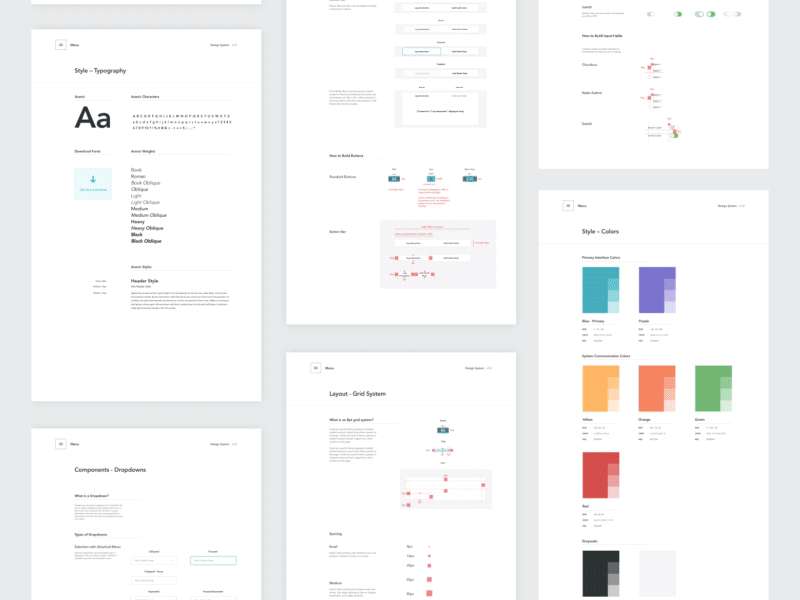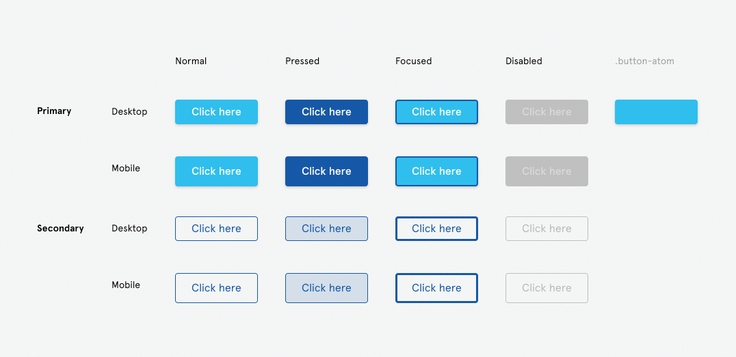In summary, what is a Design System?
There are many specific and clear definitions that can be found everywhere on the internet because it is not a new concept. You can easily search for keywords similar to the title of this paragraph and find a lot of articles from individuals, teams, and organizations that present everything about Design Systems.
However, it may be quite academic and oriented towards professionals, so unfamiliar readers may find it difficult to understand or feel that the information received is “too complete”. Here, TELOS summarizes a more concise and less academic picture for you.
A Design System has two main parts:
- Firstly, it is a set of design standards (specifically, for website interface or UI/UX design) to ensure that all future designs will always comply with these rules, be consistent, and reflect the same common voice of the entire system and brand.
- Secondly, it is a library of reusable components that are stored, classified, and scientifically managed to be efficiently used whenever there is a need to produce a new design.

To better visualize, it’s like one day your company wants to create a sub-website to support a newly established service, with pre-planned components and functions. Now you have a Design system that provides you with buttons, registration forms, banners, and standards for where these components will be placed and how they will look. A few minutes later, you have a design with all the necessary components and ensuring consistency with the design language before, the consistency of the entire large website system.
Advantages
Having a set of standards for a system always brings clear and noticeable advantages, which is the consistency for the entire design system. Just like employees of a company in uniform make it easy for customers to recognize and remember the image of a professional and unified team, a Design system also contributes to making your website or online communication channels become a cohesive block in terms of orientation and communication. That adds to building trust from customers in the professionalism that your organization holds.

There may be times when you struggle with the idea of having to hire a designer for a new landing page, with completely new buttons or menus, which not only costs you more money but also wastes a lot of time. A good Design System will provide a library of components that you can reuse in other places, keeping everything synchronized and consistent, thus reducing the time and effort needed to create future designs.
And of course, as a system that regulates, synthesizes, and provides unified designs, the Design System can easily help you control and evaluate the correctness of your designs. Has it met the common standards, is it integrating with the entire system? Is everything consistent to outsiders? No need to think hard, just consult the rules.
Necessity (or requirement?)
The rapid development of the market, the Internet, and business activities has made many systems larger and generated a need for Design System management models. However, who should apply this technology?

If you only need a website for a simple introduction and that’s it, building a Design System may not bring significant changes. However, if you have one of the following characteristics and needs, please consider choosing a Design System as it will be a powerful tool to help you control many things. And they are:
Having a large website system with many detailed pages
You have a website with dozens of sub-pages, even many satellite websites, categorizing different types of products, performing many separate and complex functions. Without a good Design System, sometimes during the process of building sub-pages, sub-components can lead to situations where designs take a lot of time, effort, and when they are finished, they are inconsistent and lack continuity.
Need to expand and frequently add or remove sub-websites
Do you have a monthly need to create a few landing pages to run campaigns for different product lines? Or do you often have to create registration forms for certain campaigns every week? A Design System will provide a solution to significantly increase your work efficiency.
Your website has many components with different structures and functions
You own a website system that performs many operations, functions, and users can easily get lost and make small errors while using it. A Design System is quite important in this case to ensure that users can gradually become familiar with similar operations and easily determine where they are and where the destination is. The Design System will significantly improve the user experience while operating on your website.

Conclusion
Design system is a useful tool that supports standardization and consistency for the design language of a complex website system that is frequently updated and upgraded. Design system holds great promises and has excellent applicability if you truly have the need for it.
If your top concern is consistency, automation, scalability, and complexity for the interface system of your business website, then the system design may provide the answer.
Talking about Design System, it seems there’s still a lot to discuss. If you’re interested, please kindly leave some contact information. The TELOS team will have a conversation with you to understand more about this issue.



























